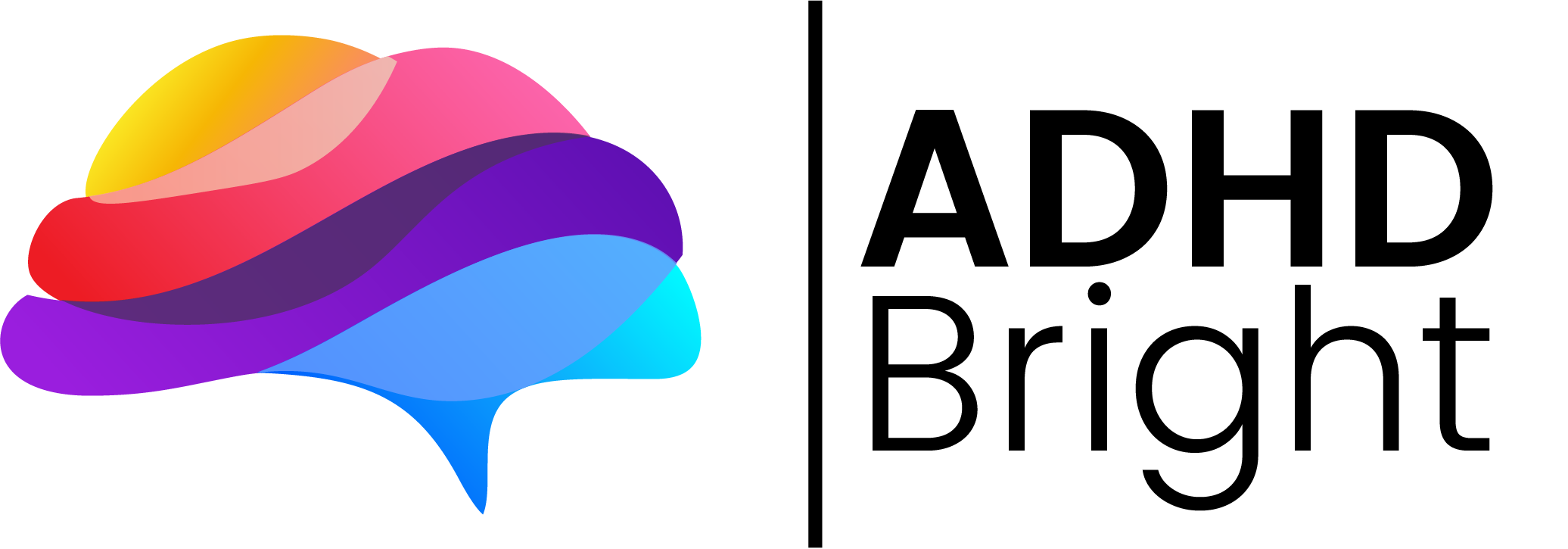You’ve made your list. You know exactly what needs to be done. The tasks are clear, specific, maybe even color-coded. And yet… nothing happens.
You want to start, but your brain won’t let you.
If that sounds familiar, you’re not alone. Task initiation is one of the most persistent challenges for people with ADHD, and understanding why it happens is the first step to overcoming it.
Why the ADHD Brain Struggles to Start
For most people, starting a task is a simple sequence: think → decide → act.
For ADHDers, there’s often a gap between those steps. You think about starting, maybe even want to start, but the action switch doesn’t flip.
This happens because of differences in executive function, the system in your brain responsible for planning, prioritizing, and initiating action. When dopamine levels are low or emotional friction is high, your brain can’t access the “go” signal.
ADHD-related task initiation problems aren’t about willpower, they’re about the brain’s ability to regulate motivation and connect intention to movement.
In other words, your brain isn’t saying “I don’t want to.” It’s saying “I can’t get traction yet.”
If starting feels impossible, you’re not failing — your brain just works differently. Learning the reasons behind ADHD procrastination helps you understand yourself better, so you can use the right strategies to finally take action.
The Emotional Layer of Task Avoidance
For ADHDers, task initiation isn’t just cognitive, it’s deeply emotional.
Every undone task can trigger guilt, frustration, and self-doubt. That emotional weight then becomes another barrier to starting, creating a self-reinforcing loop:
Overwhelm → Avoidance → Shame → More Overwhelm.
This cycle can leave you feeling frozen and disconnected from your own goals. The key to breaking it isn’t pushing harder, it’s creating conditions that make starting feel safe, clear, and rewarding.

How to Train Your Brain to Start
Task initiation is a skill you can strengthen. Think of it like a muscle that grows stronger with practice, repetition, and the right structure.
Here’s how to train it intentionally.
1. Reduce the Emotional Weight
Before you start, acknowledge how you feel. “I’m anxious,” “I’m overwhelmed,” or “I’m frustrated this feels hard.”
Naming your emotion brings it from the emotional brain into the rational one. It quiets the nervous system and gives your executive function room to work.
For me, what helps most is journaling. Venting on paper does something almost magical—it helps me see the situation from a completely different perspective than when it’s just spinning in my head. Once I process the emotion and write it out, it loses its grip.
That’s why I made journaling an essential part of ADHD Bright, incorporating CBT-based reflection prompts to help move through emotional blocks, regulate your mind, and clear the fog before you act.
If you want a few examples to start with, I’ve shared some of my favorite ADHD journaling prompts here. Once you process what you feel, emotions stop controlling you, and you can finally begin with a lighter, clearer mind.
And remember, what works for one person doesn’t always work for everyone. If journaling doesn’t resonate, try a brief physical reset: deep breathing, stretching, or a two-minute walk. These small movements help release the freeze response that often blocks ADHD task initiation, grounding your body so your brain can follow.
2. Commit to Just Two Minutes
This is the easiest, completely free method to beat inertia, and it works every single time. I promise myself I’ll only work for two minutes. I set a timer, start, and that’s it.
The funny thing? I usually forget the timer is even on. Forty minutes later, I’m deep into the task and only realize how much I’ve done when I finally look up.
That’s the power of momentum. Once you start, your brain’s dopamine system kicks in, making it easier to keep going. It’s not about finishing, just beginning.
In ADHD Bright, this concept is built right into the system with the timeboxing feature, based on Harvard’s number one productivity method. It provides a much healthier form of engagement than stress, giving your brain the challenge and structure it thrives on.
I’ve been using timeboxing for over a year now, and I can confidently say it has improved my productivity by at least 40%. It gives my ADHD brain exactly what it needs: structure, challenge, and instant feedback.
It’s you versus you. You estimate how long a task will take, set your timebox, and see if you can meet your own target. That sense of play and progress keeps your brain engaged and makes productivity something you actually enjoy.
3. Make the First Step Ridiculously Small
When a task feels too big, your brain sees it as unsafe to begin.
So shrink it.
Instead of “Write report,” make it “Open the document.” Instead of “Exercise,” make it “Put on sneakers.”
This isn’t tricking yourself, it’s activating your brain’s momentum system. Once motion begins, focus follows.
4. Externalize Your To-Dos for Instant Clarity
Don’t rely on your working memory, it’s already juggling more than enough. The ADHD brain processes information visually, not abstractly, so when you try to keep everything in your head, it quickly turns into chaos.
Write your tasks down. Get them out of your mind and onto paper, a digital list, or sticky notes on your desk. Once your tasks are visible, your brain stops spinning through endless “what should I do next?” loops.
This simple step dramatically reduces decision fatigue and overthinking. When your plan is already laid out, execution becomes effortless. It’s often said that for ADHDers, planning takes 80% of the energy and execution only 20%, because once you’ve externalized everything, you skip the friction of mental clutter and just do.
By writing everything down, you free up mental bandwidth, reduce overwhelm, and give yourself a direct path from thought to action. It’s the fastest, smartest way to get things done.
5. Create a “Starting Ritual”
Build a consistent pattern that signals “It’s time to begin.”
For me, that ritual is often making tea. But not just any tea—green tea and yerba mate are my go-tos. Both contain L-theanine, a compound that promotes calm focus without the crash of coffee. Yerba mate, especially in the morning, helps me ease into deep work mode naturally.
It’s a grounding, sensory cue. Once I smell the tea and feel the warmth in my hands, my brain knows it’s time to focus.
6. Design a Workspace That Feeds Focus
Your surroundings matter more than you think. ADHD brains are deeply influenced by their environment.
A cluttered desk can silently activate distraction and stress, and suddenly you’re cleaning your space instead of doing the task.
Make your workspace aesthetically comforting and stimulating in the right ways. Use colors, textures, or lighting that make you feel good. Keep the things you love visible and remove what doesn’t serve you.
The more visually soothing and organized your space is, the less mental resistance your brain feels to begin. You’re turning your workspace into a focus-friendly zone instead of a battlefield of distractions.
7. Focus on the Next Step Only
Once you’ve started, don’t zoom out.
Thinking about everything left to do can reactivate paralysis. Instead, tell yourself:
“One thing at the time.”
This trains your brain to stay grounded in the present moment, reducing anxiety and distraction.
Task Initiation as a Muscle
The more often you start, the easier it becomes. Each time you begin, even if you don’t finish, you reinforce the neural pathway that says, “I can move forward.”
You’re not teaching your brain to be perfect. You’re teaching it to be responsive.
As you practice, you’ll notice a shift: starting feels less painful, less dramatic, and more natural. That’s how neuroplasticity works—through repetition, patience, and positive reinforcement.
The Power of One Step
Task initiation doesn’t start with doing everything. It starts with doing something.
One list. One sentence. One minute.
For ADHDers, clarity and motion are medicine. You don’t have to wait to feel ready—readiness grows from doing.
So next time you catch yourself stuck in that endless loop of “I’ll do it later,” pause. Take a breath. Put the kettle on.
Start your two-minute timer.
Open your planner.
Do one small thing.
Your ADHD brain doesn’t need pressure—it needs permission to begin.
From Clarity to Action
If you often find yourself frozen even when your tasks are clear, you might be dealing with the deeper challenge of task initiation. You can explore this more in Task Overwhelm from Poor Clarity, where we dive into why ADHD brains need structure that matches their natural rhythms.
And if you’re ready to apply these strategies inside a visual, ADHD-friendly system, explore the ADHD Bright Planner. It’s built to help you move from stuck to started, one focused step at a time.




